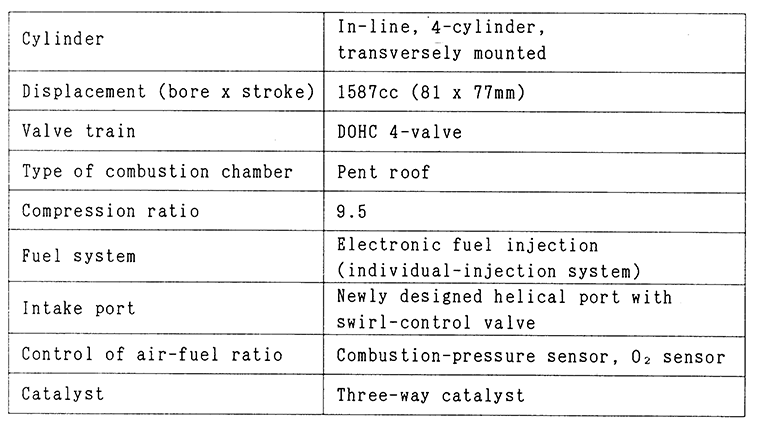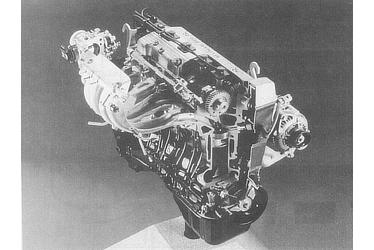May. 28, 1992
TOYOTA UNVEILS NEXT-GENERATION LEAN-BURN ENGINE
Toyota City―TOYOTA MOTOR CORPORATION today unveiled its newly developed next-generation lean-burn engine, which achieves combustion using the near-absolute minimal amount of fuel―resulting in greater fuel economy and lower emissions of CO2, a leading cause of global warming. The new engine also boasts better performance and response and a greater range of applications over Toyota's previous lean-burn systems.
In 1984, Toyota introduced the Toyota Lean Combustion System (T-LCS) in the Japanese market, becoming the world's first automaker to employ such a system that controls the air-to-fuel ratio with a lean-mixture sensor. In 1987, the company launched a T-LCS high-performance, four-valve, twin-cam engine, which is still manufactured for Europe-bound compact vehicles. In Japan, lean-burn engines could meet strict emission standards only when fitted to smaller compact-class cars (23751b) with manual transmissions.
A product of innovative application and new technologies―including the world's first mass-produced combustion pressure sensor―the new 1.6-liter, four-valve, twin-cam engine realizes a major breakthrough as it achieves high performance and response with automatic and manual transmissions on larger compact-class (27501b) cars, while still clearing the strict Japanese emissions restrictions.
- New technologies
-
- Combustion-pressure sensorBy directly monitoring combustion from the pressure inside the cylinder, the air-to-fuel ratio can be regulated with great control, achieving stable combustion at an air-to-fuel ratio very near the limit for lean-burn, greater fuel efficiency, and lower nitrogen oxide (NOx) emissions.
- Newly designed helical intake portThe new air-intake port ensures the optimum mixture swirl for lean burn, realizing lower intake resistance and superior fuel atomization and homogeneity in the mixture. This makes lean burn with lower NOx emissions possible in a wider range of driving conditions.
- Electronically controlled EGR systemOn automatic transmission models, the electronically controlled exhaust-gas recirculation (EGR) system is employed, enabling the lean-burn engine to recirculate more exhaust gas under driving conditions where engine load is great―such as during acceleration―decreasing NOx emissions and improving fuel efficiency.
- Combustion-pressure sensor
Based on internal fuel-economy testing carried out to Japanese standards, Toyota estimates the new lean-burn engine achieves an 8% increase in fuel economy for vehicles with manual transmission and 4% for automatics, compared to vehicles with conventional engines. Overall, a 10% improvement can be expected when combined with the driving system and other fuel-saving technologies.
In spite of such improvements, however, the new engine will not be introduced in the U.S. as it has yet to meet the very strict exhaust emission regulations about to be implemented. Toyota will, however, continue R&D efforts toward better lean-burn systems and a number of other energy-saving technologies. Toyota is also working in such areas as improving engine combustion and reducing friction loss, as well as reducing body weight and running resistance.

Next-generation lean-burn engine (cut-away model)
Main SpecificationsLean-Burn Engine







